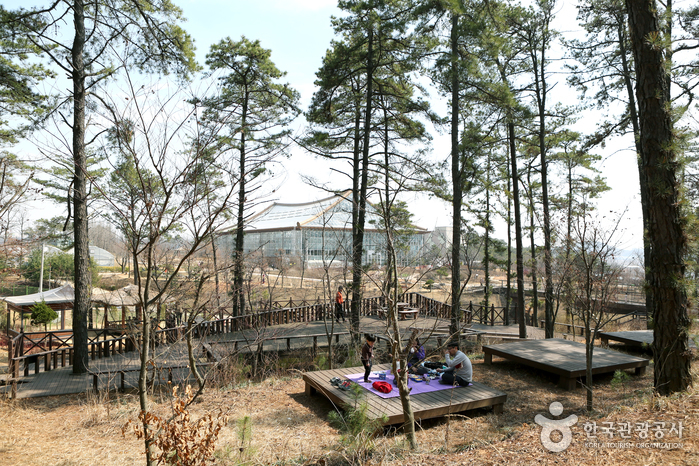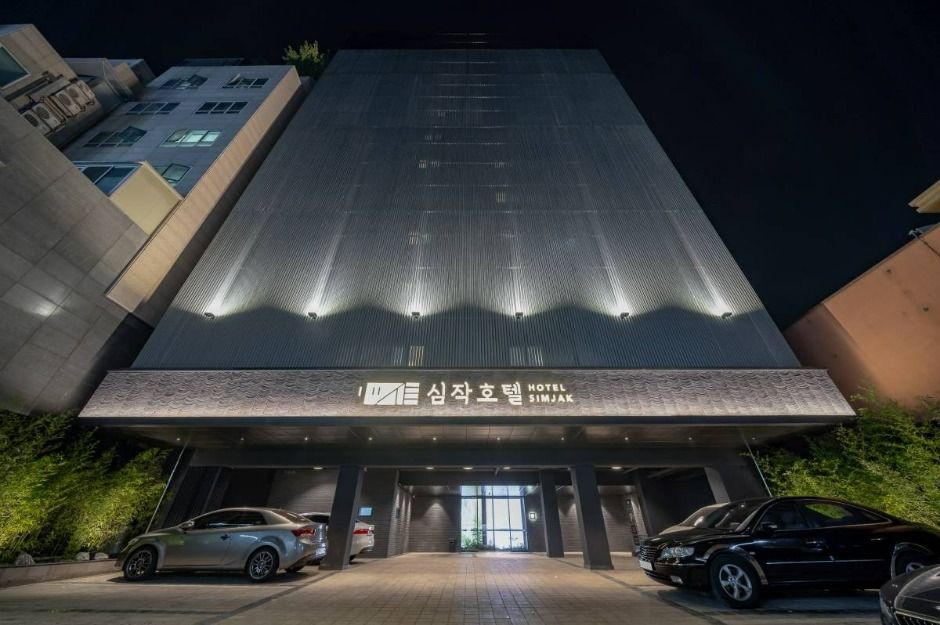Hwaseong City Botanic Garden (화성시 우리꽃 식물원)
17.7Km 2024-02-13
777-17 3.1manse-ro, Paltan-myeon, Hwaseong-si, Gyeonggi-do
Hwaseong City Botanic Garden is home to over 1,100 plant species. The botanical garden includes various structures such as the Four-season Garden, built in Hanok style, an Outdoor Flower Bed, and a Medicinal Plant Garden. The Four-season Garden houses around 300 plant species, including unique ones like the wish-fulfilling Pearlbush Root and Tree Fern. The Outdoor Flower Bed showcases a variety of plants such as Camellia, Azalea, Winged Spindle, and Crape Myrtle. The Medicinal Plant Garden offers insights into the appearance and medicinal properties of various plants traditionally used in herbal remedies.
Olive Young - Anseong Ayang Branch [Tax Refund Shop] (올리브영 안성아양점)
17.7Km 2024-06-28
113, Ayang 2-ro, Anseong-si, Gyeonggi-do
-
E-Mart - Dongtan Branch [Tax Refund Shop] (이마트 동탄)
17.7Km 2024-04-22
376, Dongtanjungang-ro, Hwaseong-si, Gyeonggi-do
-
Danggol Fishing Area (당골낚시터)
17.8Km 2024-02-13
Jangan-ri, Jangan-myeon, Hwaseong-si, Gyeonggi-do
Danggol Fishing Area, a freshwater fishing spot situated along the tributaries of Namyangho Lake with a water depth of 2.5 meters, is an excellent location for fishing. It boasts a diverse range of fish species, including crucian carp and trout. The individual fishing spots are strategically spaced three meters apart, ensuring a comfortable environment for anglers to enjoy their experience without interference. The site is equipped with modern fishing platforms that include amenities such as air conditioning and electric heating, along with available bungalows.
Olive Young - Hwaseong Byeongjeom Branch [Tax Refund Shop] (올리브영 화성병점)
17.9Km 2024-04-18
1059, Hyohaeng-ro, Hwaseong-si, Gyeonggi-do
-
Taepyeongmu Instruction Hall (태평무 전수관)
18.0Km 2025-01-08
42 Taepyeongmu-gil, Anseong-si, Gyeonggi-do
+82-31-676-0141
Gang Seonyeong, who devoted a lifetime to traditional dance, built the Taepyeongmu Instruction Hall at her own expense in 1998 in her hometown of Anseong for the proper initiation into, and the preservation of traditional dance. Taepyeongmu dance is a traditional court dance that embodies the continuing hope for the nation to exist in peace. The dancers are adorned in magnificent regal costumes and execute enthusiastic movements, alternating steps while in serene repose. The center has a large performance hall with dance performances every Saturday and a museum displaying Taepyeongmu dance-related materials and folk articles from around the world.
Weolmoon Hot Spring (월문온천 휴양지)
18.1Km 2025-06-30
5 Beodeul-ro 1597beon-gil, Paltan-myeon, Hwaseong-si, Gyeonggi-do
Weolmoon Hot Spring is a natural hot spring where water, with a pH of 9.2, emerges from 700 meters underground as alkaline sodium bicarbonate (NaHCO3) type. The water is soft and minimally irritating, contributing to smoother skin. It is also effective in treating conditions like neuralgia, rheumatoid arthritis, and allergic dermatitis. The sauna facilities include a hot water bath, open-air bath, cold water bath, showers, and a charcoal sauna.
Simjak Hotel Dongtan (더휴식 심작호텔 동탄점)
18.1Km 2025-05-02
31-15 Keunjaebong-gil, Hwaseong-si, Gyeonggi-do
Simjak Hotel Dongtan is a self-check-in hotel for those who seek ultimate rejuvenation for their soul and body. The hotel's name "Simjak" means "to build a mind," and is often mentioned in the historical records that date back to the Goryeo dynasty. The hotel offers a variety of rooms dedicated to relieving stress and providing entertainment.
Hwaseong Salt Spring (화성식염온천)
18.2Km 2025-01-13
56-1, Hwanggol-gil, Hwaseong-si, Gyeonggi-do
+82-31-351-9700
Salt spring water is speculated to be ocean water that has been trapped 700 meters underground and mixed with freshwater due to earth's crustal movements. The water is rich in minerals, and is known to have many health benefits. Hwaseong Salt Spring features several different facilities including public bath, ultraviolet steam spa, jade spa, and bulgama (fire pot) spa.
Simone (시모네)
18.2Km 2024-02-08
31 Jangsu-gil, Hyeondeok-myeon, Pyeongtaek-si, Gyeonggi-do
Simone is renowned for its egg tarts, boasting both an exterior and interior adorned in yellow. Its warm ambiance is enhanced by charming, visually appealing plating. The menu highlights a selection of egg tarts, including classic, green onion cream, corn, and chocolate varieties, all served with ample toppings. Their coffee, enriched with soft cream and corn, pairs wonderfully with the egg tarts.


![E-Mart - Dongtan Branch [Tax Refund Shop] (이마트 동탄)](http://tong.visitkorea.or.kr/cms/resource/81/2882381_image2_1.jpg)
![Olive Young - Hwaseong Byeongjeom Branch [Tax Refund Shop] (올리브영 화성병점)](http://tong.visitkorea.or.kr/cms/resource/68/2882368_image2_1.jpg)

 English
English
 한국어
한국어 日本語
日本語 中文(简体)
中文(简体) Deutsch
Deutsch Français
Français Español
Español Русский
Русский